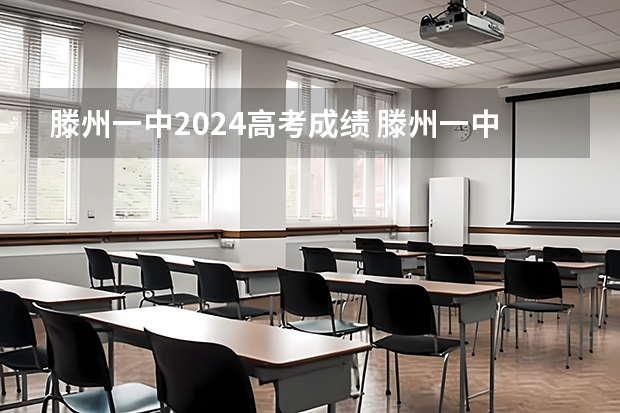医学院大学有哪些专业
2024-09-03 08:49:45 | 30高考
本文目录一览:

医学院大学有哪些专业
问题一:医学类包括什么专业? 医学类专业是与日常生活关系最为密切的专业之一,每年都会吸引不少考生报考。医学类专业共有基础医学类、预防医学类、临床医学类、医学技术类、口腔医学类、中医学类、护理学类、药学类等七大类专业。从整体上又可分为临床专业和功能辅助专业,前者主要就是临床医学和基础医学,主要包括大专业:内、外、妇、儿,传染医学,小专业:口腔医学、眼视光学、耳鼻喉学;基础医学,主要是搞理论研究服务于临床(生理学,病理学,生物化学,药理学等等)。后者包括医学影像学(彩超、X线、CT、MRI)、医学检验学(化验血气、大小便、骨髓细胞)、麻醉医学。
基础医学
【培养目标】培养具备自然科学、生命科学和医学科学基本理论知识和实验技能,能够在高等医学院校和医学科研机构等部门从事基础医学各学科的教学、科学研究及基础与临床相结合的医学实验研究工作的医学高级专门人才。
【推荐院校】复旦大学、重庆医科大学、首都医科大学、贵阳医学院
营养学
【培养目标】按照新的教学理念,结合和不断调整专业培养与人才市场的需求,通过对医学基础理论、临床医学概论、食品加工与工艺、食疗保健和预防医学科目的学习,达到毕业后能够从事临床营养科的工作,也能够担当保健食品开发研究、食品卫生检验的工作。
【推荐院校】扬州大学、山东中医药大学
麻醉学
【培养目标】培养具有基础医学、临床医学和麻醉学等方面的基本理论知识和基本技能,能在医疗卫生单位的麻醉科、急诊科、急救中心、重症监测治疗病房(ICU)、药物依赖戒断及疼痛诊疗等领域从事临床麻醉、急救和复苏、术后监测、生理机能调控等方面工作的医学高级人才。
【推荐院校】兰州大学、大连医科大学、徐州医学院、延边大学、福建医科大学、温州大学
医学影像学
【培养目标】主要学习基础医学、临床医学、医学影像学的基本理论知识,受到常规放射学、CT、核磁共振、超声学、DSA、核医学影像学等操作技能的基本训练,具有常见病的影像诊断和介入放射学操作基本能力。
【推荐院校】郑州大学、苏州大学、东南大学、兰州大学、江苏大学、南京医科大学
放射医学
【培养目标】学习基础医学、临床医学、放射医学的基础知识;用放射诊断、核素诊断、影像诊断等各种诊断技术进行疾病诊断,并掌骸其基本理论、方法和技能;应用γ射线、深部X射线、放射性核素等各种射线进行诊断及放射治疗,并掌握其基本理论、方法和技能;放射损伤及放射病的诊治技术;放射防护的基本理论、方法和技能;医学科学研究的初步能力。
【推荐院校】吉林大学、苏州大学
眼视力学
【培养目标】培养从事眼病诊治和视光学专业工作的高级眼科临床医师和视光师。
【推荐院校】温州医学院、山东中医药大学、徐州医学院
医学技术
【培养目标】2011年国务院学位委员会批准通过四川大学华西医院提出的《新设“医学技术”一级学科调整建议书》,将医学技术由临床医学下的二级学科调整为医学类一级学科。
【推荐院校】四川大学、 中南大学、 武汉大学 、中国人民大学 、同济大学 、华东交通大学、 徐州医学院、 新疆医科大学
口腔医学
【培养目标】本专业学生主要学习口腔医学的基本理论和基本知识,受到口腔及颌面部疾病的诊断、治疗、预防方面的训练,具有口腔常见病、多发病的诊疗、修复和预防保健的基本能力。
【推荐院校】武汉大学、中山大学、山东大学、同济大学、吉林大学、苏州大学、南京医科大学、徐州医学院
针灸推拿学
【培养目标】本专业培养具备中医药理论基础、针灸推拿专业知识和实践技......>>
问题二:医学包括哪些专业? 医学专业的主要分类有: 护理学(专科) 药学(独立本科) 护理学(独立本科) 护理学(本科) 药学(本科 药学(专科) 卫生事业管理(独立本科) 应用心理学(独立本科) 中药学(专科) 医学综合(成人高考) 中药学(本科) 临床医学(独立本科) 中医学(专科) 中医学(本科) 高级护理(本科) 生物制药专业(本科) 药品管理与营销(本科) 眼视光学(本科) 临床医学(本科) 口腔医学(本科) 中西医结合(专科) 应用心理学(本科) 临床医学(专科)
临床、检验、麻醉、影像都是进医院比较多,药学可以去药厂,中医现在不是很热,很多考研该学西医的。一般情况下,文科学生只能学习护理学,少量的医科大学或者中医药大学可以学习中医学,一些药科大学可以学习医药学,药学,医学检验学护理方向.临床医学/基础医学/口腔医学/预防医学/不接受文科学生。最好咨询好了再报。
问题三:全国医学类本科院校有哪些? 全国具有招生资质的医学类本科院校共有74所:北京中医药大学(北京)、北京协和医学院(北京)、首都医科大学(北京)、天津医科大学(天津)、天津中医药大学(天津)、河北医科大学(石家庄)、承德医学院(承德)、山西医科大学(太原)、长治医学院(长治)、山西中医学院(太原)、内蒙古医学院(呼和浩特)、中国医科大学(沈阳)、大连医科大学(大连)、辽宁中医药大学(沈阳)、辽宁医学院(锦州)、沈阳医学院(沈阳)、长春中医药大学(长春)、吉林医药学院(吉林)、哈尔滨医科大学(哈尔滨)、黑龙江中医药大学(哈尔滨)、牡丹江医学院(牡丹江)、齐齐哈尔医学院(齐齐哈尔)、上海中医药大学(上海)、南京医科大学(南京)、南京中医药大学(南京)、徐州医学院(徐州)、浙江中医药大学(杭州)、温州医学院(温州)、安徽医科大学(合肥)、安徽中医学院(合肥)、皖南医学院(芜湖)、蚌埠医学院(蚌埠)、福建医科大学(福州)、福建中医药大学(福州)、江西中医学院(南昌)、赣南医学院(赣州)、山东中医药大学(济南)、山东万杰医学院(淄博)、潍坊医学院(潍坊)、泰山医学院(泰安)、滨州医学院(滨州)、济宁医学院(济宁)、河南中医学院(郑州)、新乡医学院(新乡)、湖北中医药大学(武汉)、湖北医药学院(十堰)、湖南中医药大学(长沙)、长沙医学院(衡阳)、广州中医药大学(广州)、南方医科大学(广州)、广东医学院(湛江)、广州医学院(广州)、广东药学院(广州)、广西医科大学(南宁)、广西中医学院(南宁)、右江民族医学院(百色)、桂林医学院(桂林)、海南医学院(海口)、重庆医科大学(重庆)、成都中医药大学(成都)、泸州医学院(泸州)、川北医学院(南充)、成都医学院(成都)、贵阳医学院(贵阳)、遵义医学院(遵义)、贵阳中医学院(贵阳)、昆明医学院(昆明)、云南中医学院(昆明)、 *** 藏医学院( *** )、陕西中医学院(咸阳)、西安医学院(西安)、甘肃中医学院(兰州)、宁夏医科大学(银川)、新疆医科大学(乌鲁木齐)。
问题四:大学学医的专业都有什么啊? 医学的分类 医学可分为现代医学(即通常说的西医学)和传统医学(包括中医学、藏医学、蒙医学等等)多种医学体系。不同地区和民族都有相应的一些医学体系,宗旨和目的不尽相同。印度传统医学系统也被认为很发达。 研究领域大方向包括基础医学、临床医学、检验医学、预防医学、保健医学、康复医学等等。 基础医学包括:医学生物数学 医学生物化学 医学生物物理学 人体解剖学 医学细胞生物学 人体生理学 人体组织学 人体胚胎学 医学遗传学 人体免疫学 医学寄生虫学 医学微生物学 医学病毒学 人体病理学 病理生理学 药理学 医学实验动物学 医学心理学 生物医学工程学 医学信息学 急救学 护病学 新中心法则。 临床医学包括: 临床诊断学 实验诊断学.影像诊断学+ 放射诊断学+ 超声诊断学+ 核医诊断学* 临床治疗学 职能治疗学 化学治疗学 生物治疗学 血液治疗学 组织器官治疗学 饮食治疗学 物理治疗学 语言治疗学 心理治疗学 内科学 外科学 泌尿科学 妇产科学 儿科学 老年医学 眼科学 耳鼻喉科学 口腔医学 传染病学 皮肤医学 神经医学 精神病学 肿瘤医学 急诊医学 麻醉学 护理学 家庭医学 性医学 临终关怀学 康复医学 保健医学 听力学。 今年热门有 内科专业推荐院校: 呼吸系统疾病――中国医科大学、华中科技大学、四川大学、第三军医大学、广州医学院 循环系统疾病――北京大学、中国协和医科大学、复旦大学、华中科技大学、第三军医大学 消化系统疾病――中国协和医科大学、上海交通大学、第一军医大学、第二军医大学、第四军医大学、山西医科大学 泌尿系统疾病――复旦大学、中山大学 血液系统疾病――北京大学、中国协和医科大学、苏州大学 内分泌与代谢疾病――中国协和医科大学、上海交通大学、中南大学 传染病――复旦大学、浙江大学、重庆医科大学、第四军医大学 外科专业推荐院校: 泌尿外科――北京大学、复旦大学、天津医科大学 骨外科――北京大学、复旦大学、军医进修大学,第二军医大学、第四军医大学 普外科――复旦大学、南京大学、华中科技大学、中山大学、四川大学、第二军医大学、第三军医大学 胸心外科――中国协和医科大学、中南大学、第二军医大学、第四军医大学 神经外科――首都医科大学、复旦大学、中山大学、吉林大学、第四军医大学 整形外科――上海交通大学 药物分析方向:分析化学、无机化学、药物分析 药物化学方向:有机化学、药物化学 药剂学方向:生物化学、物理化学、药剂学 药理学方向:生物化学、药理学 药学专业推荐院校: 药物化学――中国协和医科大学、北京大学、中国药科大学 药剂学――沈阳药科大学、中国药科大学 生药学――北京大学、中国药科大学 微生物与生化药学――中国协和医科大学 药理学――中国协和医科大学、北京大学、中南大学、中山大学、第二军医大学 中药学――北京中医药大学、上海中医药大学、南京中医药大学、成都中医药大学 妇产科学――北京大学、中国协和医科大学、华中科技大学 儿科学――北京大学、复旦大学、上海交通大学、重庆医科大学 眼科学――北京大学、首都医科大学、复旦大学、中山大学 耳鼻咽喉科学――首都医科大学、复旦大学 皮肤病与性病学――北京大学、中国协和医科大学、中国医科大学 人体解剖与组织胚胎学――复旦大学 免疫学――北京大学、中国协和医科大学 病原生物学――复旦大学 病理学与病理生理学――北京大学、中国协和医科大学、复旦大学、中南大学、汕头大学 影像医学与核医学――中国协和医科大学、复旦大学 临床检验......>>
问题五:医学院有哪些专业? 临床 检验 影像 麻醉 护理 口腔 眼视光 心理学 。。。
上专科的话就不需要本科 初中毕业就可以的
但是临床专科最好不要上 临本都没人要了
护理就挺好的啊 需求量大 也好找工作 要求五常端正 身高好像是160还是155以上
问题六:一般医科大学的所有科系有哪些 别的学校不太清楚,天津医大的专业有以下几个,都是本科的啊:
医学类 预防医学 麻醉学 医学影像学 医学检验 口腔医学 护理学 药学 药物制剂 基础医学 临床医学 眼视光学 预防医学类 工学类 生物医学工程 教育学类 运动康复与健康 文学类 英语 法学类 法学 理学类 应用心理学 生物信息技术 管理学类 公共事业管理 公共管理
应该够全的了
问题七:二本的医学院校有哪些? 泰山医学院,潍坊医学院,徐州医学院、蚌埠医学院、等等都是二本。现在考到执业医师后还有三年规培,合格后才能被找到工作。这是近一年改的。要慎重选择。可以学辅助科室比如影像之类的
问题八:临床医学专业哪些大学比较好? 第一档:协和,北医,复旦(上医),上海交大(上二医),川大(华西),中山,中南(湘雅)
【以下内容摘自 一小时看透大学专业 医学类专业特辑3
院校培养特色及优势专业;附属医院强势专科点评
国内医学院校及主要医院全局纵览】
有的学校在宣传中将自己和这7所学校并列,但其实只有上述7所医学院校是无可争辩最顶尖的。其他如武汉同济医科大学(已并入华中科技大学)、中国医科大学(中国 *** 最早创建的医学院校)、白求恩医科大学(已并入吉林大学)等,也享有盛名,但相比之下实力终究还是稍逊一筹,因此放入了第二档。可以说,能进入这些医学院的同学,请珍惜机会,为成为中国医界的栋梁和中坚而踏实努力。
这7所医学院中,前4所在学校品牌知名度方面更突出,但分数也更高。考虑录取分数的话,可能华西和湘雅是性价比非常高的医学志愿选择。
第二档第三档第四档 自己去看吧,百度阅读有电子版。
问题九:全国哪些综合大学有医学专业 大学
大学医学博士点
大学 医学重点学科数
1 北京大学
北京大学
43
北京大学 16
2 复旦大学
四川大学 42
复旦大学 13
3中国协和医科大学 中山大学41
中国协和医科大学
12
4 中山大学
复旦大学 40
第四军医大学
8 4
5 中南大学
山东大学
40
第二军医大学
7
6
四川大学
南方医工大学36
中山大学 6
7 华中科技大学
哈尔滨医科大学 35
中南大学
6
8 上海交通大学
华中科技大学 35
北京中医药大学 6
9 北京中医药大学 中国协和医科大学 35
上海交通大学4
10南方医科大学
浙江大学 35 3.26
华中科技大学 4
11 天津医科大学
南京医科大学 34
广州中医药大学
4
12 山东大学
上海交通大学 30
四川大学3
13 哈尔滨医科大学 天津医科大学 30
中国药科大学 3
14 浙江大学
中南大学 30
天津医科大学
3
15 首都医科大学
郑州大学
29
重庆医科大学 3
16 广州中医药大学
首都医科大学
24
第三军医大学
3
17 重庆医科大学
中国医科大学 23
军医进修学院 3
18 南京医科大学
西安交通大学 20
首都医科大学
3
19 中国医科大学
重庆医科大学
20
上海中医药大学
3
20 成都中医药大学
吉林大学 19
南京中医药大学
3
按照排名分为先后
问题十:北京大学医学院有哪些专业 基础医学(本博)
临床医学(本博)
口腔医学(本博)
预防医学(本硕)
药学(本硕)
护理学
生物医学英语
医学实验学
医学检验
护理(专科)

医学技术类包括哪些专业 都有什么专业
医学专业分为 基础医学 、预防医学、临床医学、医学技术、口腔医学、中医、护理、药学七大类。每个类别下都有几个不同的子类,可以说很复杂。但是不同专业的就业前景是不一样的。今天,边肖将和你谈谈五个最受欢迎的医学专业。只要你渴望学习,你就不用担心你的工作和待遇。希望能给你一些帮助。
临床医学专业
临床医学是医学专业的核心和基础专业,每年高考填报志愿时都受到考生和家长的广泛关注。临床医学专业主要研究疾病的病因、睁搏慧诊断、治疗和 预后 ,以后可以从事临床工作,也就是医院各个科室的 临床医生 。虽然该专业扩招严重,生源质量参差不齐,但并不影响其成为最受欢迎的医学专业之一。每年都有很多毕业生要挤脑子进甲、乙类医院。不过,整体来说, 公立医院 的招聘名额是非常有限的。但是随着社区小医院的普及,加上专科自身的属性,想找对口工作或者自己创业,待遇还是挺好的。
护理专业
护理专业主要学习相关的医学基础,预防保健的基础理论知识,接受临床护理技能的基础训练。毕业生具备为客户实施整体护理和社区卫生服务的基本能力。随着我国向 老龄化社会 的转变,老年人的数量越来越多,人们对健康的要求越来越高,这决定了护理专业人悉答才将会受到欢迎。虽然公立医院对护理毕业生的需求有限,但保健医生、家庭护士、健康咨询专家也将成为银笑该专业毕业生的另一个不错的选择,市场前景相当不错。但缺点是这个专业的工作很辛苦,也导致很多毕业生转行。
口腔医学专业
口腔医学专业主要学习口腔医学的基础理论和知识,接受口腔颌面部疾病的诊断、治疗和预防方面的培训。毕业生具备常见病、多发病的诊断、治疗、修复和预防性保健的基本能力。口腔医学毕业生就业领域很广。毕业生可以在大医院做口腔相关工作,也可以自己创业。更重要的是,他们可以在美容院做相关的面部整形和 正畸 工作。可以说就业前景挺好的。
麻醉学专业
麻醉学专业主要培养掌握麻醉操作技术,毕业生可在医疗卫生单位 麻醉科 、急诊科、急救中心等科室从事麻醉相关工作。可以说这个专业比其他医学专业容易很多,学生数量很少,当然市场需求也很小。但是如果本科麻醉学毕业,进公立医院还是挺难的。但如果研究生毕业,这种情况会发生质的变化,不用担心工作和待遇。
医学影像专业
医学影像专业是一门新兴学科,不仅在临床医学中应用广泛,而且为疾病诊断提供了科学依据。毕业生可从事临床医学影像诊断或 放射治疗 、医学教育和医学研究。与其他医学专业相比,本专业的工作压力相对较小,比较轻松。另外行业发展很快,所以毕业生不多,竞争压力小。基本上可以找到对应的。此外,他们不必直接联系病人。医患之间感染的概率比较低。唯一不好的是x光会杀死自己的 白细胞 。

泌尿外科学的介绍
30高考(https://www.30gaokao.com)小编还为大家带来泌尿外科学的介绍的相关内容。
高考结束了,现在即将进入填报志愿的阶段,这时候除了考虑学校,还要考虑专业。有人想了解泌尿外科学是什么。接下来我为大家整理了泌尿外科学的介绍,希望对你有帮助哦!
泌尿外科
泌尿外科,是主要诊断和治疗泌尿系统“外科”部分疾病的医院科室,主要治疗各种泌尿性疾病。
治疗范围
各种尿结石和复杂性肾结石;肾脏和膀胱肿瘤;前列腺增生和前列腺炎;睾丸附睾的炎症和肿瘤;睾丸精索鞘膜积液;各种泌尿系损伤;泌尿系先天性畸形如尿道下裂、隐睾、肾盂输尿管连接部狭窄所导致的肾积水等等。
泌尿外科是个比较古老的专科,有较久的历史;但同时却又是个比较新的专科,甚至到2013年,在有的分科医院里,还是有别的专科而唯独没有泌尿外科。这说明,这个专科是重要的,但发展也是不平衡的。
区别
泌尿外科不应该叫“泌尿科”,因为它不包括与尿有关的“内科”部分,如肾炎、糖尿病、尿崩症等,这应当加以区别而避免混淆。然而情况在变化,科学在前进,不断地有新的项目由内科范围转入到泌尿外科中来,例如肾血管性高血压、肾上腺的一些疾病等,所以也必须辩证唯物地看待问题。
泌尿外科学
泌尿外科学主要内容为肾脏移植,腹腔镜手术,肾上腺腺瘤、嗜铬细胞瘤、原发性醛固酮增多症等肾上腺手术治疗,肾、膀胱、前列腺肿瘤手术,前列腺癌手术,肾盂输尿管交接部狭窄手术,肾、输尿管、膀胱结石手术治疗,经膀胱、耻骨后前列腺增生摘除手术,经尿道膀胱肿瘤电切手术,经膀胱镜应用钬激光进行膀胱肿瘤切除,尿道下裂、阴茎下屈整形等手术,体外碎石治疗肾、输尿管、膀胱结石。近年来开展了慢性前列腺炎的病因检查和治疗,以及男性性功能障碍和男性不育的诊治。
案例:梗阻性尿路疾病
Obstruction is one of the most important abnormalities of the urinary tract, since it eventually leads to decompensation of the muscular conduits and reservoirs, back pressure, and atrophy of renal parenchyma. It also invites infection and stone formation, which cause additional damage and can ultimately end in complete unilateral or bilateral destruction of the kidneys.
梗阻是泌尿道最重要的异常之一,因其最终使肌性管道及其容器失去代偿能力,发生反压及肾实质萎缩。它亦可导致感染及结石形成,加重肾脏损害,最终使一侧或双侧肾脏完全破坏。
Both the level and degree of obstruction are important to an understanding of the pathologic consequences. Any obstruction at or distal to the bladder neck may lead to back pressure affecting both kidneys. Obstruction at or proximal to the ureteral orifice leads to unilateral damage unless the lesion involves both ureters simultaneously. Complete obstruction leads to rapid decompensation of the system proximal to the site of obstruction ,with immediate muscular failure. For example, acute retention occurs if the obstruction is distal to the bladder, and anuria occurs if obstruction involves both ureters. Partial obstruction leads to gradual progressive muscular hypertrophy followed by gradual dilation. decompensation ,and hydronephrotic changs. Vesicoureteral reflux may develop in some cases.
梗阻的平面及程度对了解其病后果是重要的。膀胱颈或膀膛颈以下部位梗阻,其反压可影响双侧肾脏,而输尿管口或其近端梗阻则引起单侧损害,除非双侧输尿管同时有病变。完全梗阻可能可使梗阻以上泌尿系统迅速增值失代偿能力,伴有立刻肌力丧失。例如梗阻在膀胱以下部位可以引起急性尿潴留,而双侧输尿管发生梗阻则可出现无尿。部分梗阻则逐渐引起进行性肌肉肥厚,随后出现逐渐扩张,代偿功能丧失及肾积水变化。膀胱输尿管反流可在某些病例出现。
Etiology
病因
Acquired urinary tract obstruction may be due to inflammatory or traumatic urethral strictures, bladder outlet obstruction (benign prostatic hypertrophy or cancer of the prostate), vesical tumors, neuropathic bladder, extrinsic ureteral compression (tumor, retroperitoneal fibrosis, or enlarged lymph nodes), ureteral or pelvic stones, ureteral strictures, or ureteral or pelivic tumors.
获得性尿路梗阻可能由于炎性或损伤性尿道狭窄,膀胱出口梗阻(良性前列腺肥大或前列腺癌)、膀胱肿瘤、神经性膀胱疾病、外源性输尿管压迫(肿瘤、腹膜后纤维化或巨大的淋巴结)、输尿管结石或肾盂结石、输尿管狭窄、及输尿管或肾盂肿瘤引起。
Pathogenesis
病原学
Regardless of its cause, acquired obstruction leads to similar changes in the urinary tract, which vary depending on the severity and duration of obstruction.
不论何种原因,获得性梗阻引起尿路内相类似的改变,而改变的具体情况则因梗阻的严重程度和时间长短有所不同。 30高考
a. Urethral Changes: Proximal to the obstruction, the urethra dilates and balloons. Aurethral diverticulum may develop, and dilatation and gaping of the prostatic and ejaculatory ducts may occur.
a.尿道改变:梗阻近端尿道扩张及膨胀可发展为尿道憩室、前列腺管及射精管扩张及裂口。
b. Vesical Changes: Early, the detrusor and trigonal thickening and hypertrophy compensate for the outlet obstruction, allowing complete bladder emptying . This change leads to progressive development of bladder trabeculation, cellules, saccules, and then, diverticula. Subsequently, bladder decompensation occurs and is characterized by the above changes plus incomplete bladder emptying, resulting in residual urine. Trigonal hypertrophy leads to secondary urteral obstruction owing to increased resistance to flow through the intravesical ureter. With detrusor decompensation and residual urine accumulation, there is strectching of the hypertrophied trigone, which appreciable increases ureteral obstruction. This is the mechanism of back pressure on the kidney in the presence of vesical outlet obstruction (while the urterovesical junction maintains its competence)。 Catheter drainage of the bladder relieves trigonal stretch and improves drainage from the upper tract.
b.膀胱改变:早期为使膀胱完全排空,逼尿肌及膀胱三角增厚及肥厚,以代偿膀胱出口梗阻。这种改变逐渐发展成膀胱小梁、小腺泡、囊泡,终成为膀胱憩室,最后膀胱失去代偿功能,表现长期持征为上述改变加重,和膀胱排空不完全,最终出现残余尿。膀胱三角区肥厚可引起继发性输尿管口梗阻,这是由于尿液通过膀胱壁部分输尿管时阻力增加而造成的。由于逼尿肌失代偿及残余尿增加,肥厚的三角区过度伸展,加重输尿管梗阻,这就是由于膀胱出口梗阻对肾脏发生反压的机制(此时膀胱输尿管连接处功能健全)。膀胱置管引流减少三角区牵张,并改善上尿路引流。
A very late change with persistent obstruction (more frequently encountered with neuropathic dysfunction) is decompensation of the ureterovesical junction, leading to reflux. Reflux aggravates the back pressure effect on the upper tract by exposing it to abnormally high intravesical pressures——in addition to favoring the onset or persistence of urinary tract infection.
持续性梗阻(常由于神经原疾病膀胱功能失常)非常晚期限改变为输尿管膀胱连接处失偿导致尿液反应。面对膀胱非常高的压力,尿液反流除促使尿路发生感染或使感染持续性,还加重上尿路的反压。
c. Ureteral Changes: The first noted change is a gradually progressive increase in uretereal distention. This increases ureteral wall stretch, which in turn increase contractile power and produces ureteral hyperactivity and hypertrophy. Because the ureteral musculature runs in an irregular helical pattern, stretching of its muscular elements leads to lengthening as well as widening. This is the start of ureteral decompensation, where tortuosity and dilatation become apparent. These changes progress until the ureter becomes atonic, with infrequent and ineffective or completely absent peristalsis.
c.输尿管改变:最先可见的改变为输尿扩张逐渐增加,这就增加输尿管壁的牵张,从而增加收缩力,产生输尿管过度活动及肥厚。因为输尿管是不规则螺旋形走向,肌内成份的牵张使输尿管延长及增宽。输尿管的弯曲及扩张标志着它功能失偿的开始,这种改变继续进行直至输尿管失去张力,蠕动减少或完消失。
d. Pelvicaliceal Changes: The renal pelvis and calices, being subjected to progressively increasing volumes of retained urine, progressively distend. The pelvis first shows evidence of hyperactivity and hypertrophy and then progressive dilatation and atony. The calices show the same changes to a variable degree, depending on whether the renal pelvis is intrarenal or extrarenal. In the latter, caliceal dilatation may be minimal in spite of marked pelvic dilatation. In the intrarenal pelvis, caliceal dilatation and renal parenchymal damage are maximal. The successive phases seen with obstruction are rounding of the fornices, followed by flattening of the papillae and finally clubbing of the minor calices.
d.肾盂肾盏改变:肾盂肾盏由于承受的残余尿容量逐渐增加而扩张。肾盂早期表现是蠕动增强及肥厚,以后逐渐扩大及无张力。肾盂根据其是肾内肾盂抑或外肾盂,而呈不同程度的同样改变。如为后者,虽然肾盂已明显扩大,肾盏扩张可能不明显;而若为肾内肾盂,肾盏扩张和肾实质损害均严重。其梗阻连续相(Successive phase)所见为穹窿呈圆形,接着肾乳头呈扁平,最后肾小盏呈杵状。
e. Renal Parenchymal Changes: With progressive pelvicaliceal distention, there is parenchymal compression against the renal capsule. This, plus the more important factor of compression of the arcuate vessels as a result of the expanding distended calices, results in a marked drop in renal blood flow. This leads to progressive parenchymal compression and ischemic atrophy. Lateral groups of nephrons are affected more than central ones, leading to patchy atrophy with variable degrees of severity. The glomeruli and proximal convoluted tubules suffer most from this ischemia. Associated with the increased intrapelvic pressure, there is progressive dilation of the collecting and distal tubules, with compression and atrophy of tubular cells.
e.肾实质改变:随着肾盂肾盏进行性扩大,肾实质向包膜侧受压,加上由于肾盏扩大,向弓形动脉压迫这一重要因素终于使血流明显下降,而导致进行性肾实质受压和缺血性萎缩。侧组肾单位受累较中央组为重,而导致严重程度不等的斑状萎缩。肾小球及近曲小管受缺血损害最重。伴随肾盂内压增加,集合管及远曲小管呈进行性扩大,肾小管细胞受压和萎缩。
Clinical Findings
临床表现
a. Symptoms and Signs: The findings vary according to the site of obstruction:
症状与体征:其表现因梗阻位置而异。
Infravesical obstruction——Infravesical obstruction leads to difficulty in initiation of voiding, a weak stream, and a diminished flow rate with terminal dribbling. Burning and frequency are common associated symptoms. A distended or thickened bladder wall may be palpable. Urethral induration of a stricture, benign prostatic hypertrophy, or cancer of the prostate may be noted on rectal examination. Meatal stenosis and impacted urethral stones are readily diagnosed by physical examination.
膀胱下梗阻:膀胱下梗阻导致起始排尿困难,排尿无力及尿流率减少,伴随尿后滴沥。烧灼感及尿频为常见伴随症状。可触及膨胀或增厚的膀胱壁,肛门检查可发现狭窄部尿道变硬,良性前列腺增加或前列腺癌。尿道口狭窄和尿道嵌塞结石常可由物理学检查而获诊断。
Supravesical obstruction——Renal pain or renal colic and gastrointestinal symptoms are commonly associated. Supravesical obstruction may be completely asymptomatic when it develops gradually over a period of several weeks or months. An enlarged kidney may be palpable. Costovertebral angle tenderness may be present.
膀胱上梗阻:肾区疼痛或肾绞痛常与胃肠道症状同时出现。当膀胱上梗阻发展缓慢时。经数周或数月可完全无症状。可触及增大的肾脏。肋脊角可有压痛。
b. Laboratory Findings: Evidence of urinary infection, hematuria, or crystalluria may be seen. Impaired kidney function is noted by elevated blood urea nitrogen and serum creatinine, with the ratio well above the normal 10:1 because of urea reabsorption.
b.化验结果:可观察到感染尿,血尿或晶体尿,血尿素氮及血清酐升高,由于尿素氮再吸收以致其比值高于10:1.这表明肾功能受损害。
c. X-Ray Findings: Radiologic examination is usually diagnostic in cases of stasis, tumors, and strictures. Dilatation and anatomic changes occur above the level of obstruction, whereas distal to the obstruction, the configuration is usually normal. This helps in localizing the site of obstruction .Combined antegrade imaging by intravenous urograms and retrograde imaging by ureterograms or urethrograms, depending on the site of obstruction, is sometimes needed to demonstrate the extent of the obstructed segment. In supravesical obstruction, demonstration of stasis and delayed drainage is essential to establish and measure the severity of obstruction.
c.X线表示:尿液胡滞,肿瘤或狭窄的病例,放射学检查可获诊断。梗阻平面以上有扩张和解剖学改变,而在梗阻远端形态为正常,这有助于诊断梗阻位置。根据梗阻位置有时需同时作顺利性静脉尿路造影及逆行性输尿管造影或尿道造影,以确定梗阻段的伸延。在膀胱以上梗阻,显示郁滞及延迟,引流,对于确定及估计梗阻的严重性是重要的。
d. Special Examinations:
d.特殊检查:
Antegrade urography via percutaneous needle or tube nephrostomy is of particular value when the obstructed kidney fails to excrete the radiopaque material on excretory urography. This procedure allows application of the Whitaker test, during which fluid is introduced into the renal pelvis at varying rates. The fluid transport can be measured and the degree of obstruction estimated by the use of a pressure monitor.
顺行时尿路造影:当阻塞的肾脏在排泄性尿路中造影剂不能排泄时,使用经皮针或者说导管行肾造瘘特别有价值,这种操作可施行Whitaker试验, 在试验期间液体可以不同程度注入肾盂。可测量液体转移,以压力监测器来估计梗阻程度。
Ultrasonography——This will reveal the degree of dilatation of the renal pelvis and calices and allows for diagnosis of hydronephrosis in the prenatal period.
超声显像:它可展示肾盂及肾盏的扩大程度,及可在胎儿期诊断肾积水。
Isotope studies——A technetium Tc 99m DMSA scan portrays the degree of hydronephrosis, as well as renal function. Use of diruretics during the scan can provide information similar to that obtained with the Whitaker test.
同位素检查:用锝99M DMSA扫描可了解肾盏积水程度及肾功能。在扫描时使用利尿剂可得到与Whitaker试验相似的效果。
CT scan——This may be of value in revealing the degree and site of obstruction as well as the as the cause in many cases. The use of contrast agents will allow estimation of residual renal function.
CT扫描:在某些病例,对显示梗阻部位,程度以及原因有一定价值,使用对比剂可估计残留有肾功能。
Complications
并发症
The most important complication of urinary tract obstruction is renal parenchymal atrophy as a result of back pressure. Obstruction also predisposes to infection and stone formation, and infection occurring with obstruction leads to rapid kidney destruction.
尿路梗阻最重要的并发症为反压所致的肾实质萎缩。梗阻也可以使肾脏易于感染和形成结石,而发生于梗阻的感染则可加速对肾脏的破坏。
Treatment
治疗
The aim of therapy is relief of the obstruction(eg, catheterization for relief of acute urinary retention)。 Surgery is often necessary. Simple urethral stricture may be managed conservatively by dilation or urethrotomy. However, urethroplasty may be required. Benign prostatic hypertrophy and obstructing bladder tumors require surgical removal.
治疗的目的在于解除梗阻(例如:上导尿管以解除急性尿潴留)。常常需要外科治疗。单纯尿道狭窄可用尿道扩张及尿道切开等保守法治疗,但有时需行尿道成形术。良性前列腺增生及阻塞性膀胱肿瘤需外科切除。
Impacted stones must either be removed or bypassed by a catheter if it is thought that they may pass spontaneously. If they do not pass spontaneously, the stones must be removed surgically later.
嵌顿性结石必须取石;如认为结石可能自行排出,亦可经旁道置管。如不能自行排出,以后必须手术取石。
Ureteral or ureteropelvic junction obstruction requires surgical revision and plastic repair, either by ureterovesicoplasty, ureteroureteral anastomosis, bladder flaps to bridge a gap in the lower ureter, transureteroureteral anastomosis or ureteropyeloplasty. Penal stones may be removed instrumentally via percutaneous nephrostomy or by irrigation through a tube placed directly into the kidney.
输尿道或肾盂输尿管交界梗阻需行手术矫正或行整形修补;输尿管膀胱成形术,输尿管输尿管吻合术,或输尿管肾盂成形术。在下段输尿管则可用膀胱瓣作搭桥填补缺损。肾结石可通过皮穿器械摘除,或者经皮穿刺肾造瘘或经肾直接置管进行冲洗。
Preliminary drainage above the obstruction is sometimes needed to improve kidney function. Occasionally, permanent drainage and diversion by cutaneous ureterostomy, ileal or colonic loop diversion, or permanent nephrostomy is required. If damage is advanced, nephrectomy may be indieated.
有时为改善肾功能可先在梗阻上方置管引流,有时需作永久性引流,输尿管皮肤造口尿流改道术,回肠或结肠改道或永久性肾造口等。如损害加重,可通适用肾切除。
Prognosis
预后
The prognosis depends on the cause, site, duration, and degree of kidney damage and renal decompensation. In general, relief of obstruction leads to improvement in kidney function except in seriously damaged kidneys, especially those destroyed by inflammatory scarring.
预后取决于原因,位置,病程及肾脏损害和肾脏失偿程度。一般来说,解除梗阻可使肾功能改善,除非肾脏严重受损,尤其是炎性疤痕所破坏的。
泌尿外科学的介绍相关 文章 :
★ 泌尿外科学的介绍
★ 泌尿系统知识
★ 泌尿外科
★ 泌尿外科实习心得体会3篇
★ 泌尿外科实习心得体会
★ 泌尿外科医生述职报告
★ 泌尿外科实习心得体会范文
★ 2019泌尿外科医生述职报告精选5篇
★ 泌尿外科科室年终总结范文
★ 泌尿外科医生述职报告
以上就是医学院大学有哪些专业全部内容,更多相关信息,敬请关注30高考。更多相关文章关注30高考:www.30gaokao.com免责声明:文章内容来自网络,如有侵权请及时联系删除。

锦州医科大学医疗学院有哪些专业锦州医科大学医疗学院开设专业名单:药学、康复治疗、护理、医学影像、麻醉学、口腔医学、临床医学。锦州医科大学医疗学院药学专业介绍专业培养目标:培养从事药品经营、生产及使用管理工作的高素质专门人才。业务培养要求:本专业培养学生具备管理学、经济学的基本理论、基本知识,具备药学各主要分支学科的基本理论、基本知识和基本技能,受到药学实验

延边大学医学院有哪些专业延边大学医学院开设专业名单有:口腔医学、麻醉学、预防医学、临床医学。延边大学医学院口腔医学专业介绍培养目标:培养德、智、体等方面全面发展,具备医学基础理论和临床医学知识,掌握口腔医学基本理论和临床操作技能,能在医疗卫生机构从事口腔常见病、多发病的诊治和预防工作的口腔医学应用型专门人才。主要课程:人体解剖学、组织胚胎学、病理生理学、病

大学医学专业分类基础医学类:基础医学、生物医学、生物医学科学等3个本科专业;临床医学类:临床医学、麻醉学、医学影像学、眼视光医学、精神医学、放射医学、儿科学等7个本科专业;公共卫生与预防医学类:预防医学、食品卫生与营养学、妇幼保健医学、卫生监督、全球健康学、运动与公共健康等6个本科专业;中医学类:中医学、针灸推拿学、中医康复学、中医养生学、中医儿科学、中医骨伤科学、藏医

东京大学医学院有哪些专业首先看一下东京大学医学部/医学研究科介绍:由此可见,东京大学医学部有医学科、健康综合科学科;东京大学医学大学院有分子细胞生物学、功能生物学、病因・病理学、生物物理医学、脑神经医学、社会医学、内科学、生殖・发育・老化医学、外科学、健康科学・护理学、国际保健学、医科学、公共健康医学。日本东京大学那个专业最好东京大学在本科教育方面拥有10

江南大学医学院有哪些专业江南大学医学院开设了多个专业,包括临床医学、护理学、影像学和检验学。其中,临床医学专业为学生提供了全面的医学知识和技能训练,旨在培养具备扎实医学基础和临床实践能力的医疗人才。护理学专业则专注于培养能够提供高质量护理服务的护理人员,涵盖生理、病理、药理等多方面的医学知识,以及护理实践技能。影像学专业主要教授学生影像学的基本原理和实际操作技术,旨在培养能够进行医学影像诊断

天津医科大学临床医学院专业有哪些天津医科大学临床医学院设置了一系列专业,以满足不同学生的学术需求和职业规划。以下为学院推荐的王牌专业列表,供参考。临床医学专业,是学院的旗舰专业之一,学制五年。学生将深入学习医学理论与临床实践,培养成为具备高水平医疗技能与专业知识的医学人才。学费为每年20000元。健康服务与管理专业,致力于培养具备现代管理理念和健康服务知识的复合型人才。学制为四年

法医学专业大学排名法医学专业大学排名是:1、上海交通大学(A+)上海交通大学,简称“上海交大”,位于直辖市上海,是我国历史最悠久的高等学府之一,是教育部直属并与上海市共建、中央直管的全国重点大学,位列国家“双一流”、“985工程”、“211工程”重点建设高校。2、浙江大学(A+)浙江大学(ZhejiangUniversity),简称“浙大”,位于浙江省杭州市,是

大学中医专业有哪些大学中医专业有:1.中医学专业。2.针灸推拿学专业。3.中西医临床医学专业。4.中药学专业。解释:中医学专业是医学门类中最为基础且全面的专业之一。它涵盖了中医的基础理论、诊断方法、治疗技术等内容,包括中药学、诊断学、内科学、外科学等多个学科。毕业生可以从事中医临床医疗、科研、教学等工作。针灸推拿学专业
- 内蒙古警校2025年升本科了吗
- 柳州公交车在1930年到2025年这漫长时间段里有何不同? 从1930年一直到2025年,柳州公交车的演变情况是怎样的?
- 联考2025届陕西 陕西科技大学报考政策解读
- 【欣儿姐讲金专】广东工业大学431金融专硕考研最新择校分析 2025中南财经政法大学金融专硕431金融学综合考研-CC学姐排名靠前经验分享
- 江阴金科中梁公元2025售楼部电话是多少
- 2025山东省考进面名单(免费2025年国考公考省考必刷题库网课资料-网盘云-合集)
- 为什么2025年不要去上海?
- 2025年高考人数增多山东省提档线会改变么 2025高考选科要求
- 2025江西高考生有多少人
- 贵阳2025年社保缴费基数 至2025年,贵阳市人口布局规划及商品住宅供应情况
- 浙江联考2025届联考 浙江大学土木2025届考研-拟录取名单整理分析(含20/21/22/23/24年,2024.5.6更新,本贴始于.1.2)
- 联考2024和联考2025 2024高考物理黑龙江、吉林、辽宁卷
-
 湖南艺考2024综合分 艺考总分
湖南艺考2024综合分 艺考总分2024-01-11 07:42:43
-
 五期士官多少年退伍后什么待遇
五期士官多少年退伍后什么待遇2024-06-11 14:14:13
-
 保定到2025年拆迁名单是什么?
保定到2025年拆迁名单是什么?2024-12-30 05:21:00
-
 滕州一中2024高考成绩 滕州一中高考985人数
滕州一中2024高考成绩 滕州一中高考985人数2024-06-10 09:50:56
-
 大专生入党的几率是多少?
大专生入党的几率是多少?2024-06-07 01:13:24
-
 缓考是怎么回事?缓考有平时分吗?
缓考是怎么回事?缓考有平时分吗?2024-07-09 16:28:51